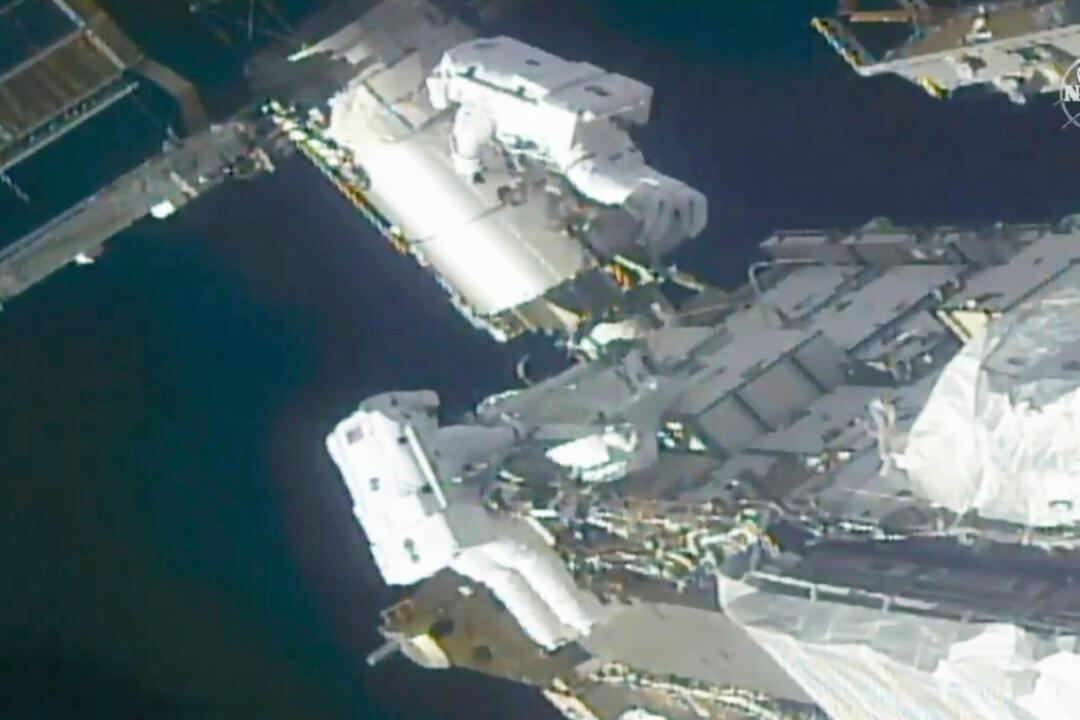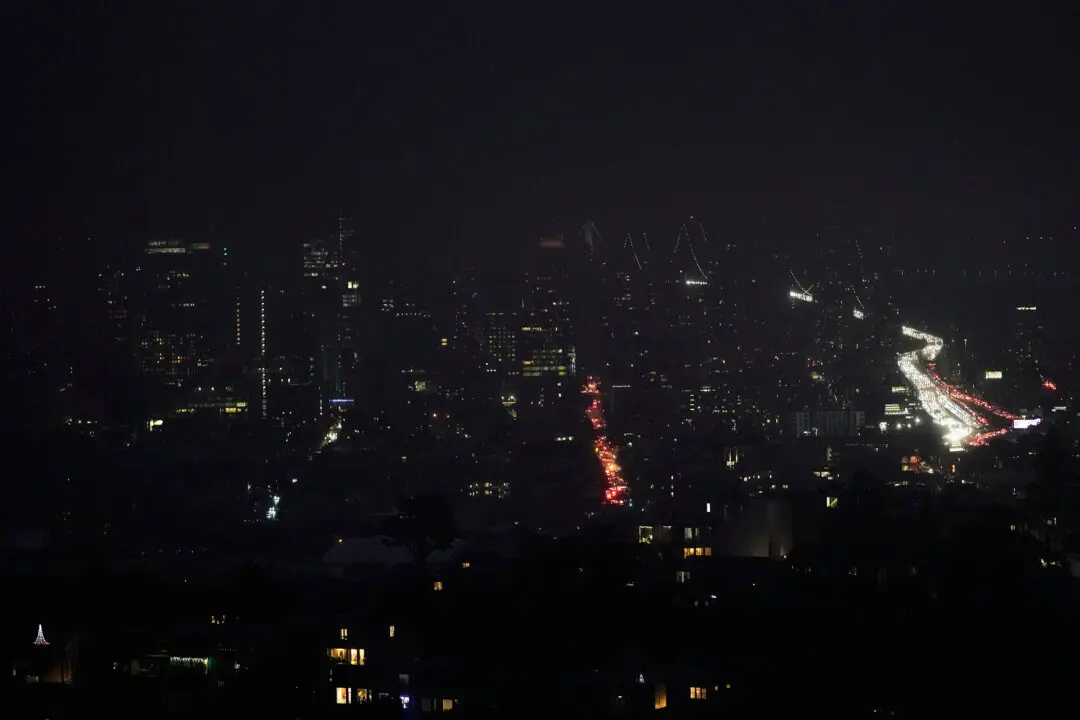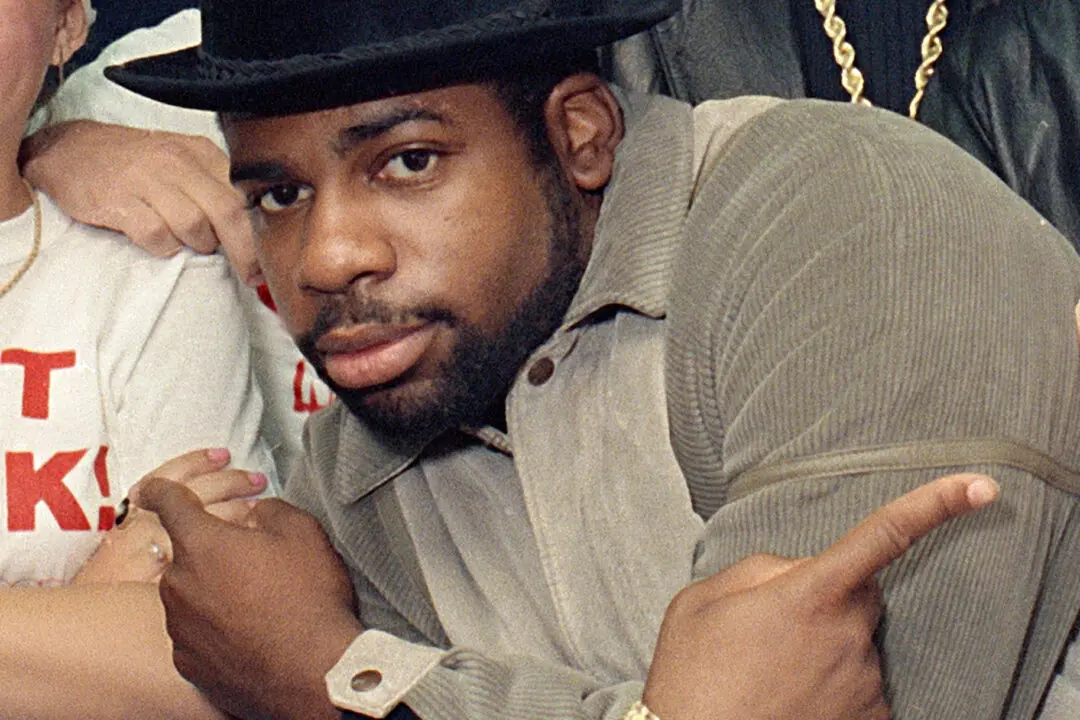CAPE CANAVERAL, Fla.— Spacewalking astronauts ventured out Sunday to install support frames for new, high-efficiency solar panels arriving at the International Space Station later this year.
NASA’s Kate Rubins and Victor Glover put the mounting brackets and struts together, then bolted them into place next to the station’s oldest and most degraded solar wings.





